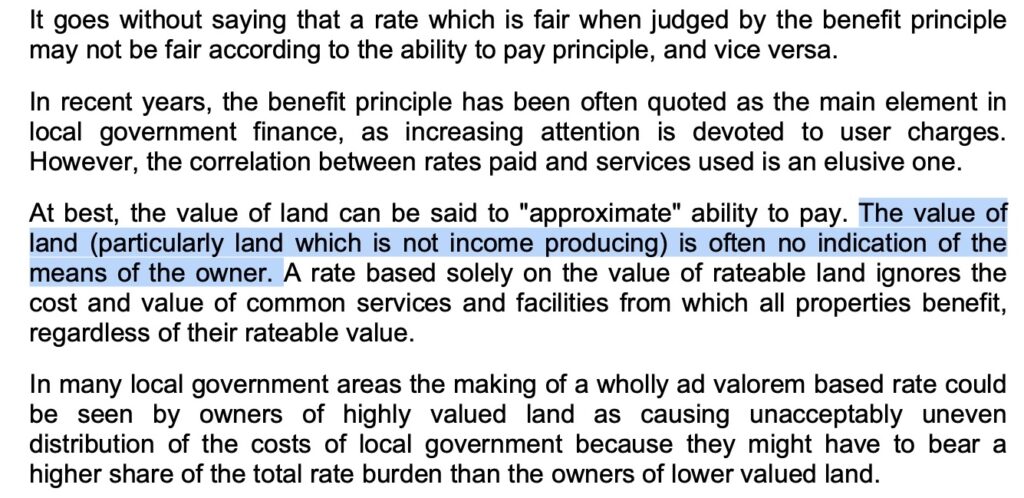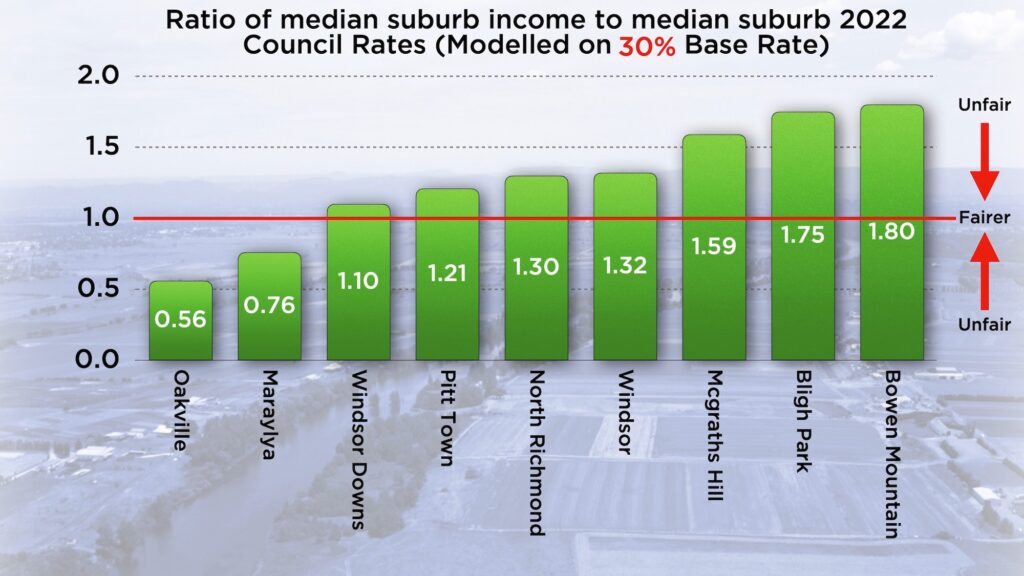Day: April 19, 2022
Are you paying too much in Council rates? News from the 2022-2023 Hawkesbury Council Budget
Hawkesbury Council's rating system is broken and unfair. However, there are developments I'd like to share with you.
For context, I've been advocating for reform of our rating system since I was first elected to Council in 2016:
- October 2020 - Defeated in the effort to ensure fairer Hawkesbury Council Rates
- May 2020 - New land valuations give little relief for rates in most Hawkesbury suburbs
- September 2017 - Hawkesbury landowners get extended deadline for review of their land value
- August 2017 - Hawkesbury Council rate rises and the Valuer General
- August 2017 - Are some Hawkesbury residents paying too much tax?
There are many causes for the problem, ranging from distortions in land value caused by our proximity to nearby development, but two key changes introduced by the previous Council had a huge impact.
The last Council, under Mayor Lyons-Buckett and continuing under Mayor Calvert, introduced a 'Special Rate Variation' that drove everyone's rates up by a third, when the relevant rate-cap was (mostly) tracking inflation. It bears remembering that three of the Councillors who voted for that rate-hike were not returned when they stood for re-election in December.
That Council also changed the rating formula that varies the mix between a flat-fee (called a 'base rate') and your land value, moving the base rate from 50% to 30%. This has made distortions between land value and household income more acute. I'm pleased to report I voted against every such rate-hike in the last chamber.
Emphasising land value is a recipe for volatility (since it's the Valuer General who sets land value, not Council) and unfairness when land value becomes unrepresentative of a suburb in a way I'll explain below.

In calculating your rates, Council should be mindful of the principles in the Council Rating and Revenue Raising Manual, a document put out by the NSW Government through the Office of Local Government. Particularly, the principle articulated by the economist Edwin Cannan a century ago:

But the same document warns Councils that placing too much emphasis on land value in calculating rates is 'at best only an approximation' for:

The new Council elected in December 2021 resolved in January to model changing the 'Base Rate' back to 50%. That's a move that I support. Those figures will be on public exhibition soon and the budget will be adopted to take effect July 1.
The common criticism is that people on acreage properties are rich and can easily afford higher residential rates, but the data reveals a different story.
The Hawkesbury Social Atlas displays a range of statistics about our area, including median weekly income broken down by suburb:
One analysis could be to compare median household income to median rates within the same suburbs to get a sense of fairness.

Weekly income and annual rates are figures with roughly the same magnitude (say $1000-$3000). It's not as though a ratio of one is a magic number – it's arbitrary, but it does allow for a comparison that factors in both rates and the 'ability to pay' principle.
Caveats: Such an analysis is just a guide – comparing the median-this to the median-that doesn't account for those that lay on the outer edges of those bell-curves. I know pensioners on below-median income sitting on land that just happens to be close to development that they loath and want no part of. Go and talk to them about what it's like to be taxed off the farmland that they and their parents grew up on.
Nor does this analysis touch on the other factor mentioned earlier – the relative access to services. Many residents of outlying suburbs live on dirt roads, and are far from the centralised services they are subsidising with their rates, while enduring other disadvantages. Setting rates with blunt tools isn't a science, as much as I wished were otherwise.
But this at least attempts to address the equity issue that is frequently raised by my colleagues in the chamber when they speak openly of 'rich acreage landowners' vs 'poor suburbanites' in built-up suburbs.
Here is what that comparison looks like for some suburbs under the current base rate of 30%:

Here's what that means: Suburbs above a ratio of one are relatively advantaged, meaning that the rates they are charged are low compared to median household income in that suburb. Suburbs below the ratio of one are disadvantaged, meaning that rates are relatively expensive compared to income. In a fair system, one measure of fairness would be our ability to drive rates in suburbs towards the same ratio.
Now, here's what those ratios would look like for the same suburbs under a base rate of 50%:

Those suburbs who are paying not just double the average rates, but double even after factoring in relative income, move towards fairness. And other suburbs move in a modest way towards paying their fair share, and again, even after accounting for income.
If you want the raw figures, without adjustment for income, here is the preliminary modelling on a per-suburb basis for 2022-2023 rates in a range of Hawkesbury suburbs with a range of base-rates. These aren't final but will probably reflect figures which will be put on exhibition soon. Again, the base rate is 30% at the moment, and I'm advocating for it to move back to 50%.
A change to a 50% base rate is not a complete fix. It's cold comfort for residents in Oakville and Maraylya, enduring increased traffic from development and potholed roads being told that instead of paying well more than twice the rates as elsewhere, they'll now be paying only slightly more than twice even accounting for income.
Worse, the pensioner rebate on rates has been stuck at $250 for years and no longer keeps pace with our desire to give older people a hand, and Council has not addressed this in this year's budget. But any move towards fairness is a positive step.
Could we do more? Council can't set the base rate above 50% as that's limited by legislation. IPART released a long-delayed report into Council rating structures
Hawkesbury Council predicts it will take in $44M of rating income over 2022-2023 from 24,615 residences, 625 farms and 1617 businesses.
In 2016-17 that figure was $30.5M over 23,370 residences, 582 farms and 1509 businesses. In other words, Council revenue from rates have risen by 44% when the cumulative inflation rate over the same period was 11.6%
I’d say most Hawkesbury residents are prepared to pay rates that contribute to the common good, but their sense of a fair go is offended when they consider that some suburbs are paying two or three times the amount of rates of other suburbs with comparable income and access to services.
I'll continue to advocate for a fairer go while ever I remain on Council. If you don't already follow me on Facebook, Instagram or YouTube, please consider doing so for updates.


